I have been loving my Shamma Running Sandals well over 2 years now. I have run hundreds of miles of training runs, 2 marathons, and an Ultra. When traveling now the only footwear I bring is a pair of sandals unless it’s cold or I need something formal.
Here is a tour of last Sunday enjoying Shammas all day in a variety of activities. As a background I am a physician, often barefoot runner, direct of The Natural Running Center, and have opened a store in my town Two Rivers Treads focused exclusively on minimalism and teaching good running form. One unarguable truth in the footwear debate is that the foot should be flat to the ground. For walking and general recreation if you choose to wear shoes your foot should also be as close to the ground as possible for balance, proprioception, and foot muscle activation.
The day started with a nice relaxed 2 hour run on the C&O Canal. This trail within a National Park is a beautiful 186 mile stretch of crushed surface extending from Cumberland, Maryland to Georgetown. It is not a barefoot friendly surface but is perfect for minimalist shoes or sandals. On warm spring and summer mornings the open air of sandals is a joyous sensation not experienced in shoes.
The Shammas perform beautifully. The adjustable soft web strap holds the sandal on my foot in a comfortable way without any feeling of tightness. The generous size straps allow a nice tension across the top of my foot. At no time do I feel the sandal needs tightening or loosening due to a tension spot. During the run it is great to have my foot breath and still enjoy the trail, something impossible to do barefoot due to the sharptexture of the rocks. The Vibram sole allows great ground feel and a touch of protection from the sharp gravel. I finish the run refreshed.
I live in a small crunchy town so I wipe the trail dust off the Shammas and wear them to church. With the dark straps they are very appropriate and I imagine that the biblical characters in the church readings had similar footwear over 2000 years ago. It is also very pleasant to have my feet breathe after 2 hours of running.
After church my family and I stroll through the Farmers Market and often friends admire the Shammas. The organic farmers take notice as the Shammas embrace their themes of simple and natural. We have a wonderful program here doubling SNAP benefits with healthy produce and farm fresh food.
After the market I drop by Two Rivers Treads and Sundays are usually busy with local families and out of town travelers all curious about minimalist running. My staff which includes several barefoot runners love the sandals. One of my lead Employees Dion is wearing his on this wonderful day.
Some features of Shammas I especially like:
- Superb cut to foot shape. I traced my foot and sent to Josh Stiles (the founder and Master Craftsman) and the end result was perfect when they arrived.
- Top quality leather sole against the foot for moldable comfort, or the option of a rubber grip top.
- Resilient Vibram outsole for any surface
- Natural materials and earth friendly manufacture processes all made in USA
- Velco straps with easy 3 point adjustments and once adjusted it just slips back on!
- They look good and can be worn almost anywhere in my town as well as others around the country and the world. Shammas were my sole footwear on an Italy trip last summer.
The only negative of sandals is that I cannot wear them in my day job as a physician. Hospitals have a closed toe shoe rule. Maybe one day this will change as clean feet in sandals do not spread infection. Likely the opposite is true as most foot infections from foot fungus or bacteria as well as ulcers are directly attributable to non-breathing and poor fitting footwear. Not washing hands between patients spreads the infections.
For more on Shamma visit their site or visit Two Rivers Treads at our new location in Ranson WV.
Here is a picture from the recent JFK 50 mile run putting them to the true test
……………………..
A Quick Guide to Transitioning to Running Sandals
Mike Prevost, PhD
Former US Naval Academy Physical Therapist
Nothing has impacted my run gait more than running with sandals. But these are not normal sandals. You won’t find them at your local sporting goods store. The sandals I use are Shamma Sandals and they are about as close to barefoot as you can get. When I say that they changed my run gait, I mean it was an instant change. No effort required. According to my Suunto Ambit 2 GPS, my cadence went from 87ish to more than 90 (sometimes as high as 98) automatically. This resulted in a shift to a more mid foot strike and lower impact forces. You simply cannot heel strike in this type of footwear. It is possible to increase your cadence with more traditional footwear but there is a big advantage to doing it automatically. It allows you to focus your concentration on other issues, in this case posture and hip engagement. The end result for me is that I could put much more focus on those two efforts. You simply cannot focus on 3 or more run biomechanics issues at a time. Two items however are workable. I simply shift my focus back and forth between “chin in and run tall” and “pelvis back to neutral, engage hips.” My experience with run gait correction with hundreds of individuals has proven that these 3 issues (cadence, posture, hip engagement) are the 90% solution. My running sandals simply take care of one of those issues with no effort required. They also shift me to a forefoot or mid foot strike (depending on running surface), rather than a heel strike.
In the book Born to Run, Christopher McDougal made a compelling argument for a shift to more minimal running shoes. What does the science say on the subject? Micahel Warburton does a good job of summarizing the state of the science here in the journal Sportscience. Some of his arguments include:
- When comparing shod and barefoot populations in Hatii, injury rates of the lower extremities were much lower in the barefoot population (Robbins and Hanna, 1987).
- Footwear can increase the risk of ankle sprains (most common acute running injury) by decreasing awareness of foot position and reducing feedback from mechanoreceptors of the foot (Robbins et al., 1995).
- Barefoot running may reduce stress on they plantar fascia (common site of chronic running injury) by transferring the force to the yielding musculature (Robbins and Hanna, 1987).
- Barefoot runners tend to land mid-foot, rather than on the heel, engaging the foot’s soft tissue support system, which spreads the load and possibly strengthening that system over time (Yeisis 2000).
Even the American College of Sports Medicine is now recommending a shift towards less structured footwear. In their publication entitled Selecting Running Shoes, available here, they recommend choosing shoes that:
- Have minimal heel to toe drop.
- Neutral, with no motion control or stability components.
- Light, 10 oz or less.
They recommend steering clear of:
- High, thick cushioning.
- High heel to toe drop.
- Extra arch support.
In other words, they are recommending more minimal shoes.
The US Army took a look at the effectiveness of assigning running shoe types based on foot shape, a practice that has been popular for decades, and is still used in running shoe stores throughout the country. They looked at over 1,000 individuals and found that “assigning running shoes based on the shape of the plantar surface had little influence on injury risk….even after controlling for other risk factors.” (Knapik et al. 2010).
Barefoot runners, regardless of the type of surface studied, tend to land with more of a fore foot strike, reducing impact forces (Lieberman et al., 2010).
Barefoot runners land with a flatter foot posture, reducing heel impact forces and reducing forces at the knee and hip (De Wit, De Clercq and Aerts, 2000)
The tide has clearly turned in recent years, with most shoe manufacturers offering a “minimalist” lineup. The experts are converging on a consensus that all of the structure built into running shoes in the last couple of decades has not been effective and may even be counterproductive. I certainly share that view.
So that brings us back to running sandals. They are about as close to barefoot as you can get, while still maintaining some minimal protection from glass, hot asphalt, rocks etc. For improving run gait, I find minimalist running sandals to be a great tool. However, I did not just strap them on and start running. I spent 3 years gradually working myself to more minimal footwear, so I was ready. It takes time to adapt to minimalist footwear without injury. You cannot reverse 20+ years of structural foot changes from wearing shoes in just a few weeks.
If more minimal shoes are better why are people getting injured in minimal shoes? Below is a plot of ground reaction forces (the force between your foot and the ground). Note that the impact peak forces can be up to 2 X your bodyweight and push off forces (active peak) can be even greater.
These forces place stress upon the tissues of the body. Bones, ligaments, muscles, tendons and cartilage are stressed. However, this is not necessarily bad news. The body responds to these mechanical stresses by remodeling. There are two types of remodeling, elastic (good) and plastic (bad). Elastic modeling occurs when your body experiences a small amount of damage and responds by repairing the damage in a way that strengthens the tissues (adaptation) to become more resilient or resistant to future damage. Plastic remodeling occurs when the damage is great enough that the body’s remodeling mechanisms are overwhelmed and cannot fully compensate, so that there is plastic remodeling (lingering damage) that results in the tissue being more susceptible to damage in the future. Stress is delivered in two primary ways, intensity (greater force) and volume density (mileage/time – miles per week). In other words, stress can result from running harder/faster or by increasing volume or both.
If we look at the elastic and plastic stress zones over time, and we factor in adaptation, it looks like the graph below.
There are a couple of things to note in the graph. First, if stress is high enough, you get plastic remodeling and it if is low enough, you get no remodeling (no adaptation). If the stress is appropriate, you get elastic remodeling. Note that the elastic remodeling stress gets higher over time, as does the plastic and no remodeling zones. This is adaptation, or simply, increased durability. As long as you keep the training stress in the elastic zone, you get increased durability. If we plot training stress on this graph and include training and recovery days, while ensuring that we do not exceed the elastic remodeling zone, it would look like the graph below.
In this example, we get elastic remodeling because training stress does not drift into the plastic remodeling range. However, if we do a bit too much, too soon (i.e., too much running, too soon in more minimal footwear) we get the response below.
In this case, we exceeded the elastic remodeling zone a couple of times and did some plastic remodeling (damage that overwhelmed our recovery ability) and as a result we lowered the damage threshold (plastic remodeling zone). We have increased the potential for injury and have reduced durability. Most people who shift to minimalist shoes or sandals will enter this pattern. They ramp up too quickly, experience injuries and reduced durability, then have to scale back training stress until they recover, then repeat.
Highly structured running shoes place some of this stress on the structural components of the shoe, rather than all of it on the foot. This is especially true of arch supports and cushioning. The remaining forces are borne by the foot. However, the foot cannot function normally in a highly structured shoe. Also, if you are relying on your shoes to absorb some of these forces in order to minimize injuries, your feet will be very sensitive to wear and tear of the shoe and to issues like exact fit (and lacing) and changes in the structure of the shoe as the particular model evolves. Relying on highly structured shoes to prevent injury does not work. Decades of scientific data has proven this point. Strengthening the foot is a better way. It turns out that the foot can optimally absorb these forces, and spread them out optimally throughout the structures of the foot while barefoot (and while wearing really minimalist shoes, like running sandals). And an optimally functioning foot, with proper load distribution is very resilient and resistant to injury. In fact, the barefoot foot can be much more resistant to injury than a well-supported shod foot. But the constant wear of shoes has weakened some parts of the foot, specifically the parts of the foot that are supported by shoes, and our feet do not function normally (initially) when shifting to minimal footwear. This can lead to a situation where some structures of the foot are placed in plastic remodeling when making the shift to minimal footwear. The key is to stay in the elastic remodeling zone. You do this with a good minimal footwear transition plan. This achieves two things, it strengthens the structures of the foot (well beyond what could be achieved with structured footwear) and it allows the foot to start to function normally (i.e., optimally spreading forces throughout the foot). The goal is to end up in very minimal footwear, with proper functioning, strong, injury resistant feet. The bonus is that knee and hip stresses will be reduced and run biomechanics improved automatically. It is a win/win. Here is what I would recommend when shifting to running sandals:
First 3-6 months: Wear the Shammas for everyday wear. Wear them as much as you can for walking around the house, shopping, whatever. These short walks are the ideal way to break in the sandals and to begin to condition your feet (build toughness) and allow them to function normally. If you need to wear socks, Ininji socks are a great choice. I find the Ininji socks to be sufficient with my sandals down to 30 degrees (F). Use slightly more minimal running shoes for running. Look for shoes that are more flexible and have less heel to toe drop than what you are currently wearing. Don’t increase mileage much initially. Wear minimal running shoes for long walks. The shoes should be even more minimal than your running shoes. Insert a longer walk one day per week (i.e., 1-2 hours). Do this for the entire 3-6 months. That way you are toughening up the ligaments and tendons in your foot by wearing less supportive footwear, but you are not exceeding the stress threshold that would cause damage. This is a critical phase that should not be skipped.
Second 3-6 months: Shift to the minimal shoes you used for walking for both running and long walks. Continue to use the Shammas for every day wear. Incorporate the Shammas for short (1/2 – 3/4 mile) slow jogs at the end of a couple of the runs each week. Again, running 3-4 times per week, plus one long walk would be ideal.
Third 3-6 months: Continue to run in your minimal shoes, but use the Shammas for every day wear, plus your long walk. Bring a pair of Ininji socks along for the first couple of long walks. You may need to adjust your sandal straps a couple of times until you find the most comfortable configuration. Continue to add the short jogs in Shammas at the end of your runs.
Fourth 3-6 months: Shammas for every day wear, for long walks, and now for 1-2 of your runs each week.
Fifth 3-6 months: If all goes well, at the end of this 3-6 month period, shift entirely to the Shammas.
This is a very conservative strategy but it is best to do this right and do it once. It took me more than 3 years to make a complete transition. If you try to rush it, you will end up taking much longer because you will have to battle whatever chronic injury pops up first, then start the process over again. You cannot fix decades of foot weakening from shoe wear in just a couple of months. Those who are under 30 years old who have been habitually physically active can use the shorter timeframe.
Why run in sandals? For me the reason is that I wanted stronger, more injury resistant feet. More than 3 years later, and at 48 years old, my feet have never felt better. You don’t get strong feet when you support them with lots of built up structure and motion control. There are lots of running sandals available. I don’t know anything about other brands. I use Shamma Sandals because they work well, are very durable and are extremely comfortable.
References:
- Robbins SE, Hanna AM (1987). Running-related injury prevention through barefoot adaptations. Medicine and Science in Sports and Exercise 19, 148-156
- Robbins SE, Waked E, Rappel R (1995). Ankle taping improves proprioception before and after exercise in young men. British Journal of Sports Medicine 29, 242-247
- Yessis M (2000). Explosive running. Illinois, USA. Contemporary Books
- Am J Prev Med. 2010 Jan;38(1 Suppl):S197-211. doi: 10.1016/j.amepre.2009.10.013.
Effect on injuries of assigning shoes based on foot shape in air force basic training.
- Knapik JJ, Brosch LC, Venuto M, Swedler DI, Bullock SH, Gaines LS, Murphy RJ, Tchandja J, Jones BH.
- Lieberman, Daniel E.,Venkadesan, Madhusudhan, Werbel, William A.,Daoud, Adam I.,D/’Andrea, Susan,Davis, Irene S.,Mang/’Eni, Robert Ojiambo, Pitsiladis, Yannis,Foot strike patterns and collision forces in habitually barefoot versus shod runners, Nature, 463 pp 531-535, 2010.
- De Wit, Brigit, De Clercq, Dirk, and Aerts, Peter, Biomechanical Analysis of the stance phase during barefoot and shod running, Journal of Biomechanics, Volume 33, Issue 3, pp 269-278, 2000.




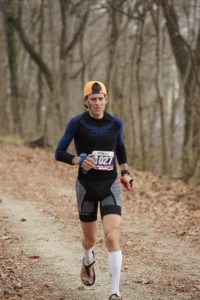
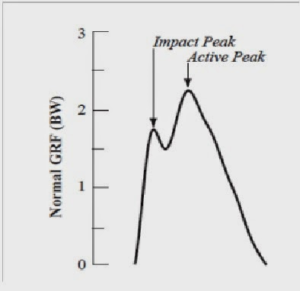
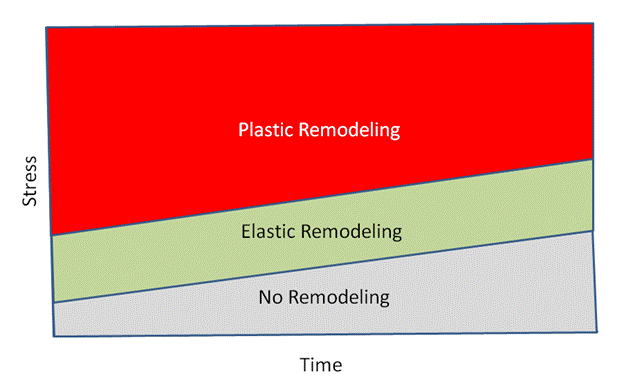
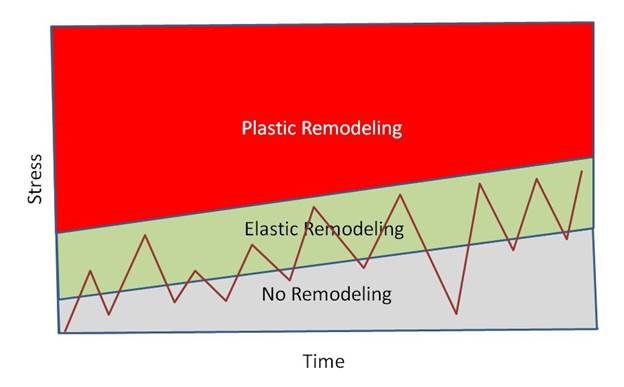
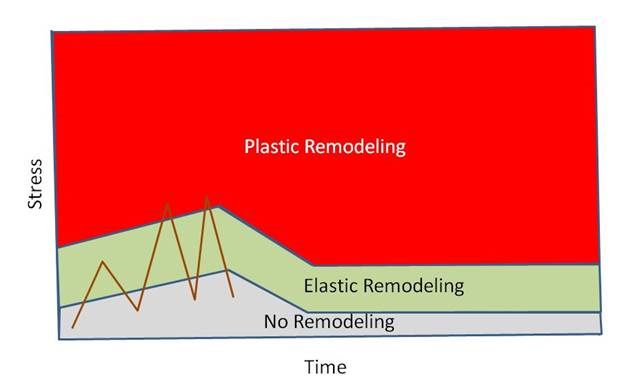
Hi,
Are you using the Jerusalem Cruiser aka Chargers or the Warrior model of Shamma Sandals?
i have both! the new grip top is awesome
Mark, for the past 2-3 years I have been wearing vivo barefoot shoes and vibram five fingers only for all my walks and use Brooks Ghost for my running. I have recently ordered Topo Athletic 3mm drop shoes and Shamma Sandals. Can I start running in these now that I have already been walking in barefoot style footware for over 2 years. Some of my walks in barefoot have been atleast 2 hours long.